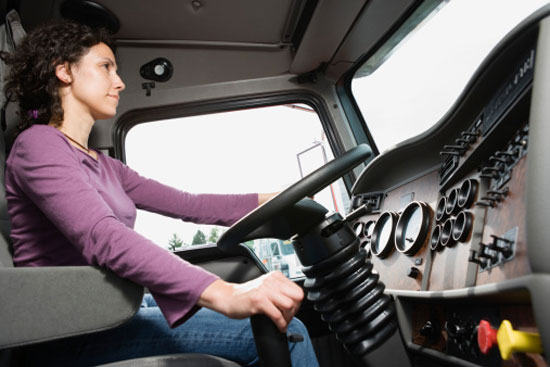
If you ask the average person to envision a truck driver, they probably imagine a slightly slimmer version of Santa Claus with a trucker hat, or maybe a younger man in plaid. The probably won’t picture a woman in this primarily male-dominated field.
However, women have gained a strong foothold in the trucking industry and make up at least 5 percent of the heavy-duty truck industry’s driving population. Although many women celebrate the new opportunities for gender equality in the workforce, the trucking industry in particular can present certain obstacles and concerns for women. But for those who overcome them, there are also great rewards.
Preparing for the Job
Driving a truck is about more than getting from point A to point B without an accident. Before anyone is allowed to operating a rig on the highway, she must first earn a CDL license and learn how to maneuver an 18-wheeler in even the most precarious of situations. No company will hire a driver without a CDL or a clean driving record. Also, the technological changes in the trucking industry have made it necessary for women to learn how to be more tech-savvy. Most rigs are equipped with an electronic on-board recorder, or EOBR software. This type of software helps companies comply with Hours-of-Service legislation and track their truck-driving employees and their onboard activities and expenses. An understanding of computers and EOBR software can give a woman a leg up on the competition. Of course, this is the same across gender lines, but it can help women get ahead.
Safety and Health Concerns
Although men face their fair share of safety and health concerns when traveling for hundreds or thousands of miles across state lines, women are at an even greater risk of safety and health perils. For example, truck drivers are often expected to participate in heavy lifting when unloading at final delivery destinations. Because an average woman’s body is physically weaker than the average man’s, this can place extra strain on female backs if they haven’t trained for it.
Furthermore, female truck drivers may be in greater danger than male drivers when on the road. Most truck drivers spend several days and nights on the road at a time, requiring them to sleep, eat and shower at rest stops and fuel stations along the way. Women are at a disadvantage in poorly lit parking areas, where thieves may hide or male driving counterparts may find it easy to take advantage of a woman traveling alone. It is recommended that women park only in well-lit areas and try to get fuel and other necessities during daylight.
Other Considerations
Women are fully capable of tackling the challenges that truck driving presents, but there are some other considerations that females should understand before getting behind the wheel. For example, it is important that all drivers have a solid understanding of truck mechanics, including how to change a headlight, check the oil or even change a flat tire in an emergency situation. Also, the job of a truck driver — regardless of gender — is a lonely one. Drivers can spend weeks at a time on the road, with nothing more to occupy their time than a radio and their thoughts. Self-entertainment is an absolute must.
Women who can take on these hurdles have the potential of earning as much or even more than male truck drivers, not to mention the opportunity to experience a rewarding career. In the future, more females will likely begin to fill driving roles — but not without first learning what it’s like to be a woman truck driver. Although the job is by no means easy, many women have optimistic hopes that females will be able to help further redefine gender roles in the shipping industry.
